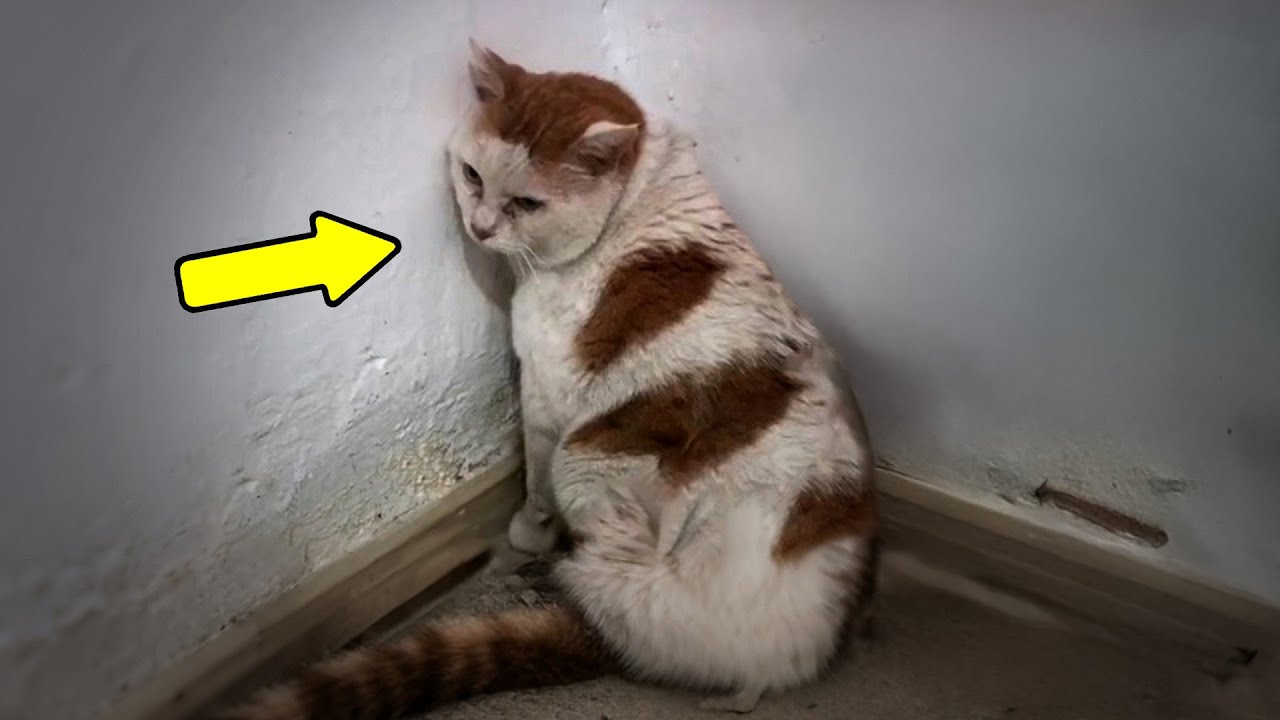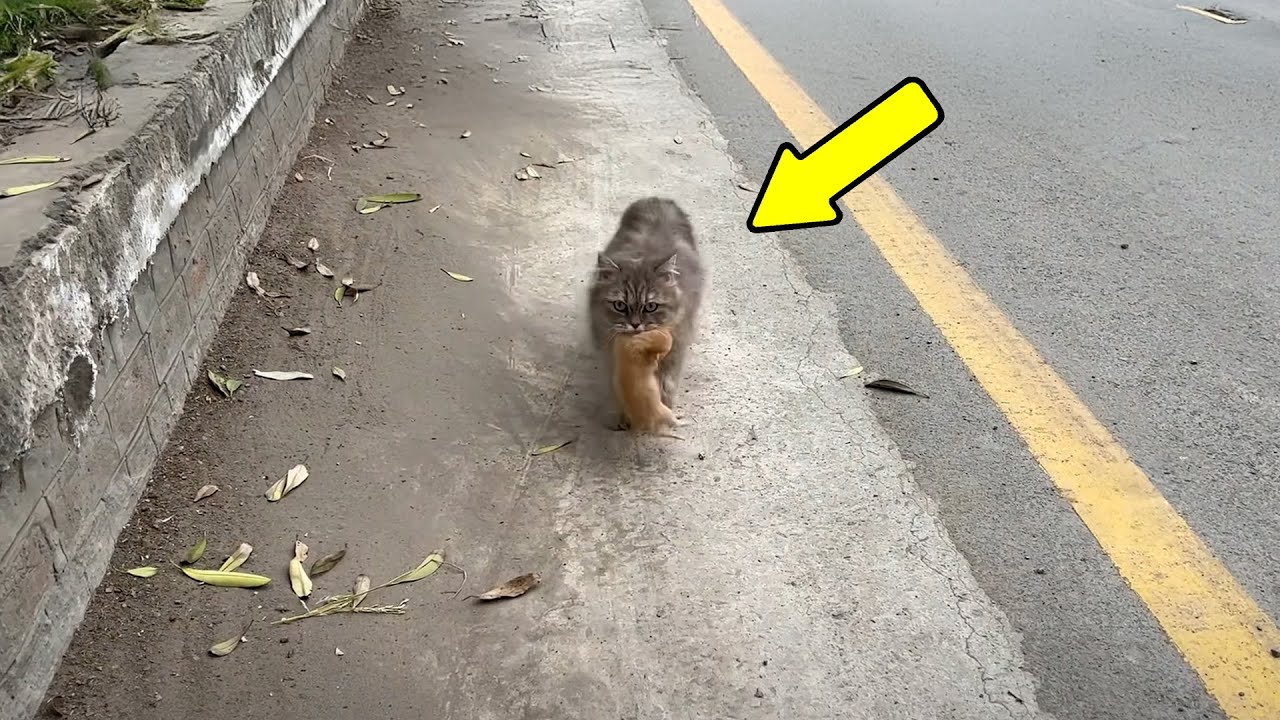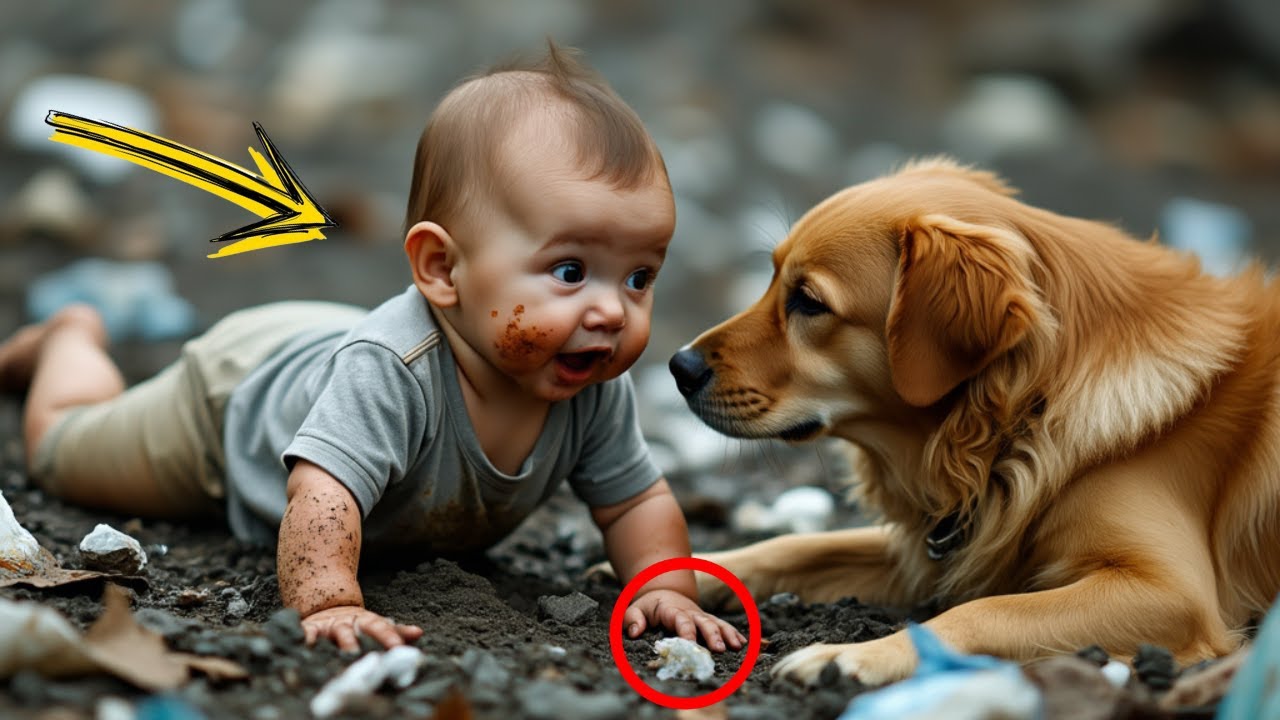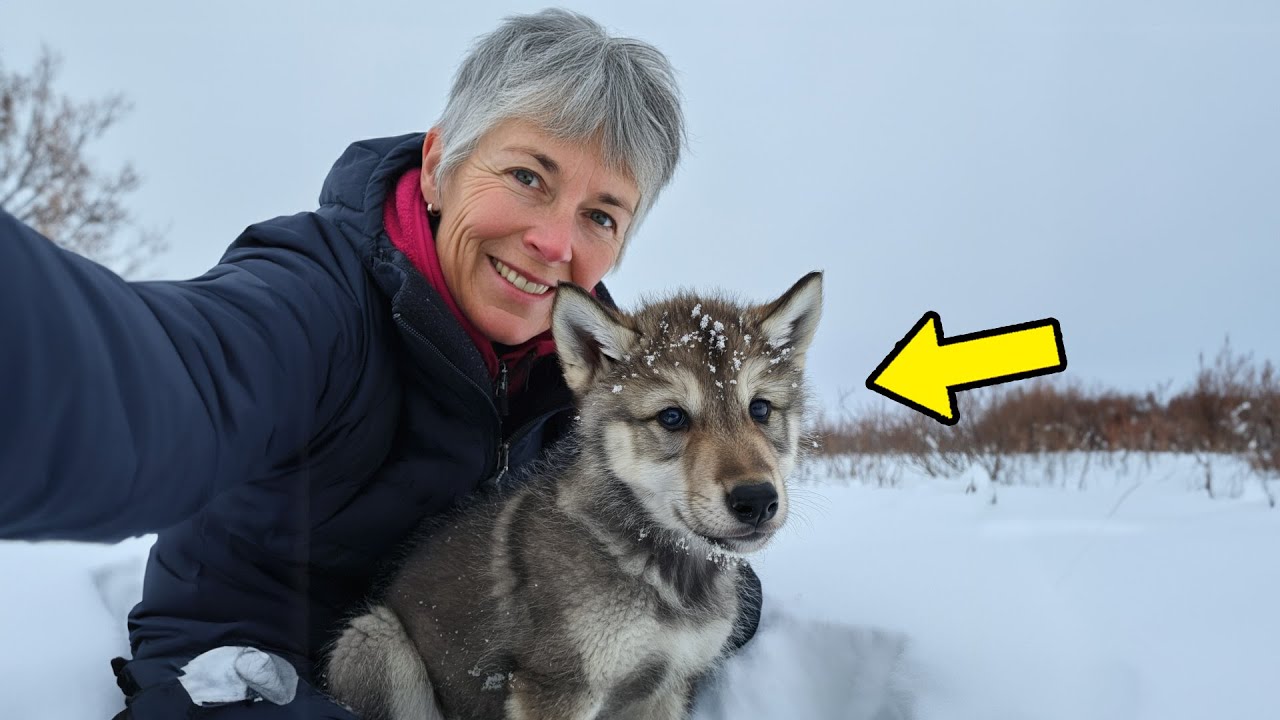The plush-crested jay (Cyanocorax chrysops) is a fascinating bird that is known for its striking appearance. It has a unique style, with bright blue eyeliner and stylized sideburns that complement its pale yellow and black suit. These medium-sized birds have black underparts, chin, throat, neck sides, and breast, while the rest of the underparts vary from creamy-white to pale yellowish. The under tail is graduated with creamy to pale yellowish rectrices and dark bases. Their foreheads have stiff feathers which graduate to softer feathers on the crown, in the process forming a velvet-like crest. Their foreheads, crown, and sides of the head are black with a luminous ultramarine crescent above the eyes. There is another similar colored spot below the eye to the rear that merges into a cyan-blue malar ᵴtriƥe forming a V. The nape is a pale ultramarine that merges to pure ultramarine further down the neck. The bill is black, eyes yellow, and legs and feet black.
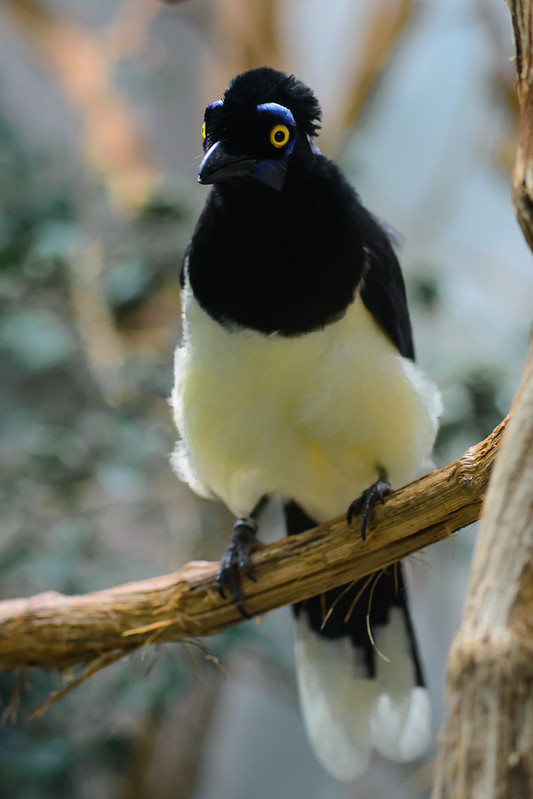
These birds are found in central-southern South America in the southwestern countries of Brazil, Bolivia, Paraguay, Uruguay, and northeastern Argentina. They frequent forest and wooded areas, from typical lowland evergreen forests and tropical deciduous forests to temperate rainforests. They are usually seen up to 1500 meters of elevation, but they may occur at 2800 meters in Bolivia.

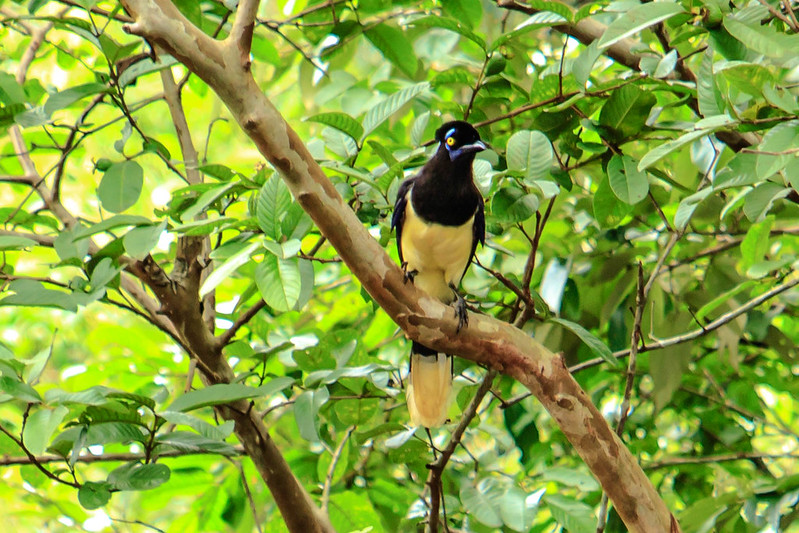
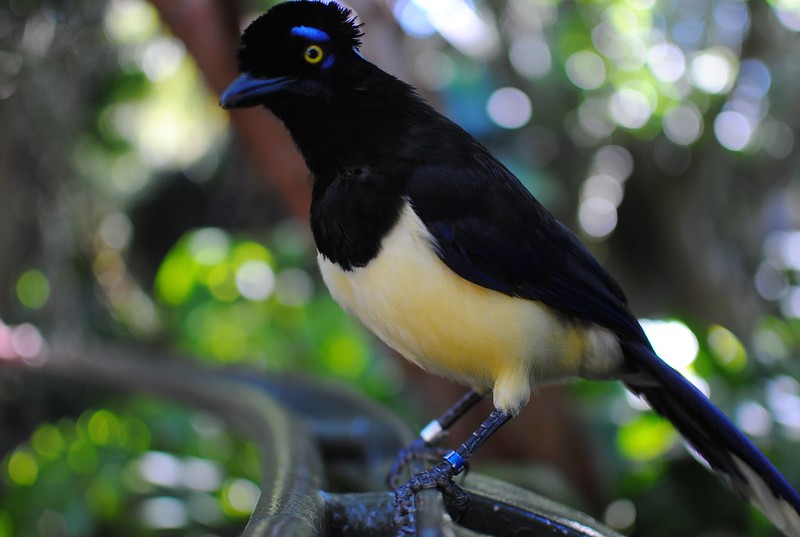
The Plush-crested Jay feeds mainly on small invertebrates, such as insects. They will, however, take fruits from several plant species such as Ficus and Phylodendrum, Casearia and Syagros, and also Psidium and Rapanea. Nestlings and eggs of other bird species, frogs, seeds, and maize are also taken when given the chance.


The breeding process of these birds is quite unique. They are sometimes cooperative when it comes to breeding, having two to three young from the previous season helping out with nesting duties and defending the territory. They build a cup-shaped nest made from twigs, lined with smaller twigs and plant fibers about 4 to 7 meters above ground in thick foliage. Two to four speckled eggs are laid within and incubated for 18-20 days. The female is fed by her mate, and the chicks fledge 22-24 days after hatching.
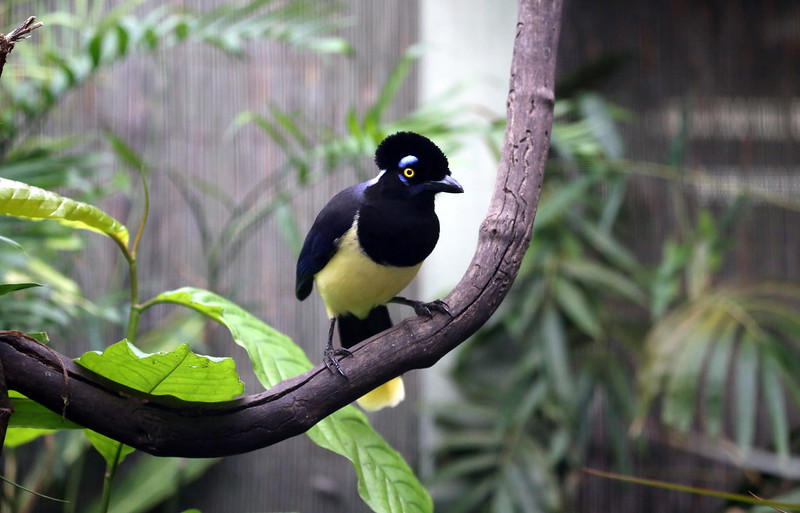
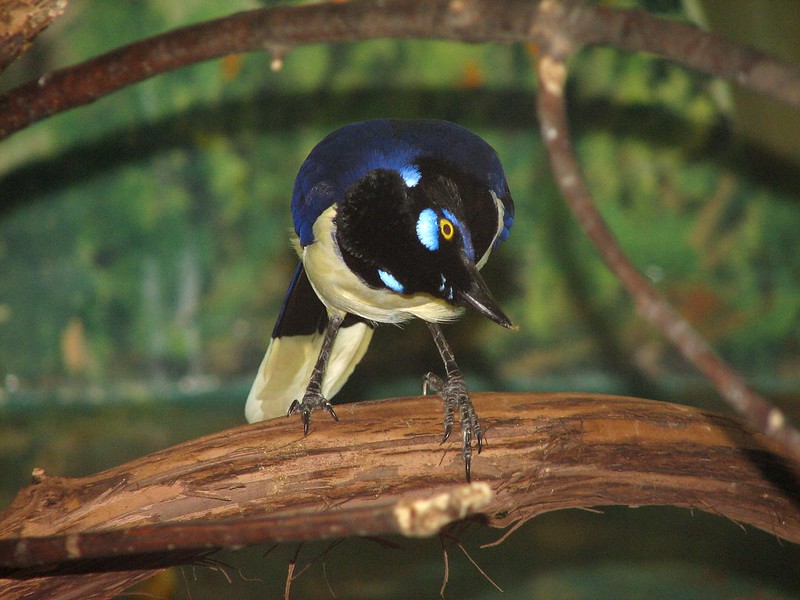
The Plush-crested Jay is threatened by deforestation, but fortunately, this species is able to live in isolated forest patches of 10-20 ha if larger forests are not too far.

